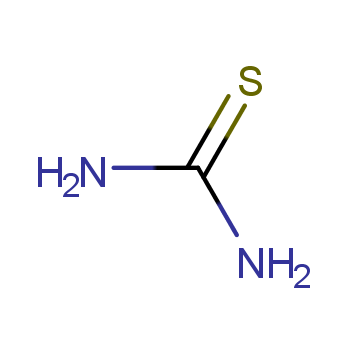 |
I was going through a list of monodentate ligands, and I came across examples like HX2O
When I searched about it, I realized that the oxygen in water can't simultaneously form bonds using both the lone pairs (due to some obvious geometrical reasons, it said).
However, I couldn't figure out any such (obvious) reasons in thiourea.
Can anyone please help?
 |
This is not really a standalone answer, rather a pointer or an exeption. There are few complexes where deprotonated thiourea S=C(NHX2)NH?
The fact that thiourea ligand is deprotonated and is coordinated asymmetrically within equatorial plane in η2?N,S
The Tc?N
Tc?N distance, 2.190(13) ?, is long when compared to known Tc(III)Tc(III) complexes. The range for Tc?NTc?N bonds was found to be 2.041 ? ... to 2.124 ? ... . This reflects delocalization of negative charge within the bidentate deprotonated thiourea ligand. This elongation is also seen in the Tc?STc?S bond, 2.543(4) ?, which is significantly longer than Tc?STc?S bonds in the parent compound [Tc(S?tu)X6][Cl]X3[Tc(S?tu)6][Cl]3 ... .
As Martin pointed out, the reasons for the observed denticity are not always transparent. Simply put, it seems like in this case in order to be a bidentate ligand, thiourea molecule needs to increase its nucleophilicity and remove steric hindrance caused by H-atoms lying within the σh plane. Both can be achieved by eliminating a single proton from the thiourea molecule.
 |